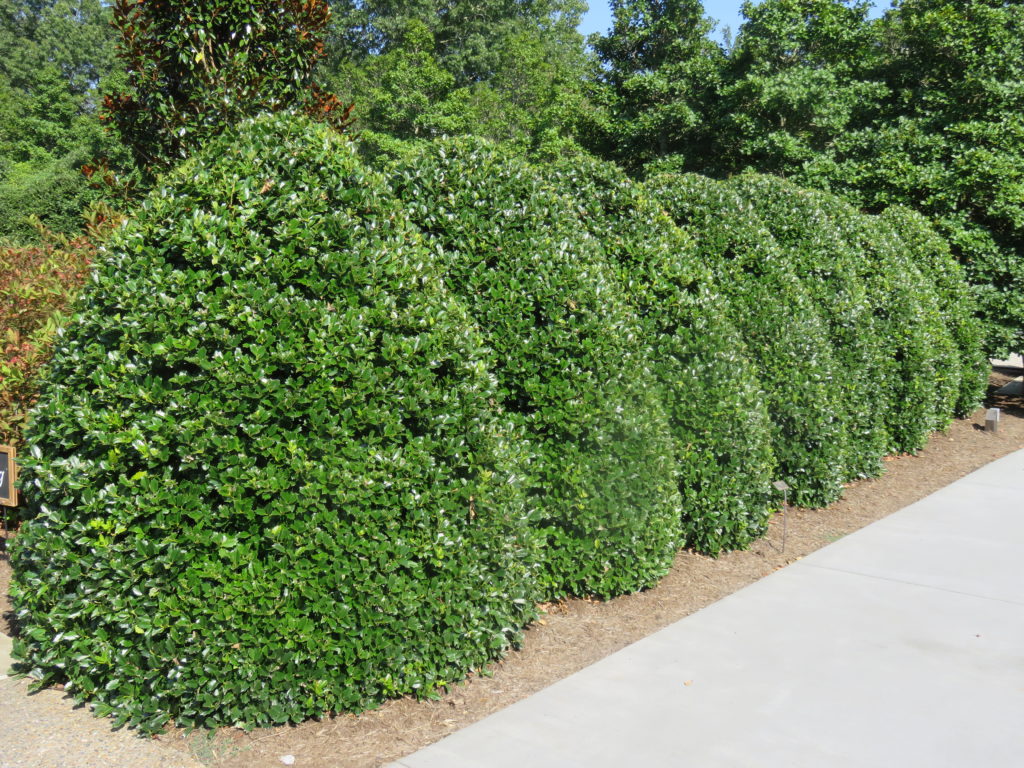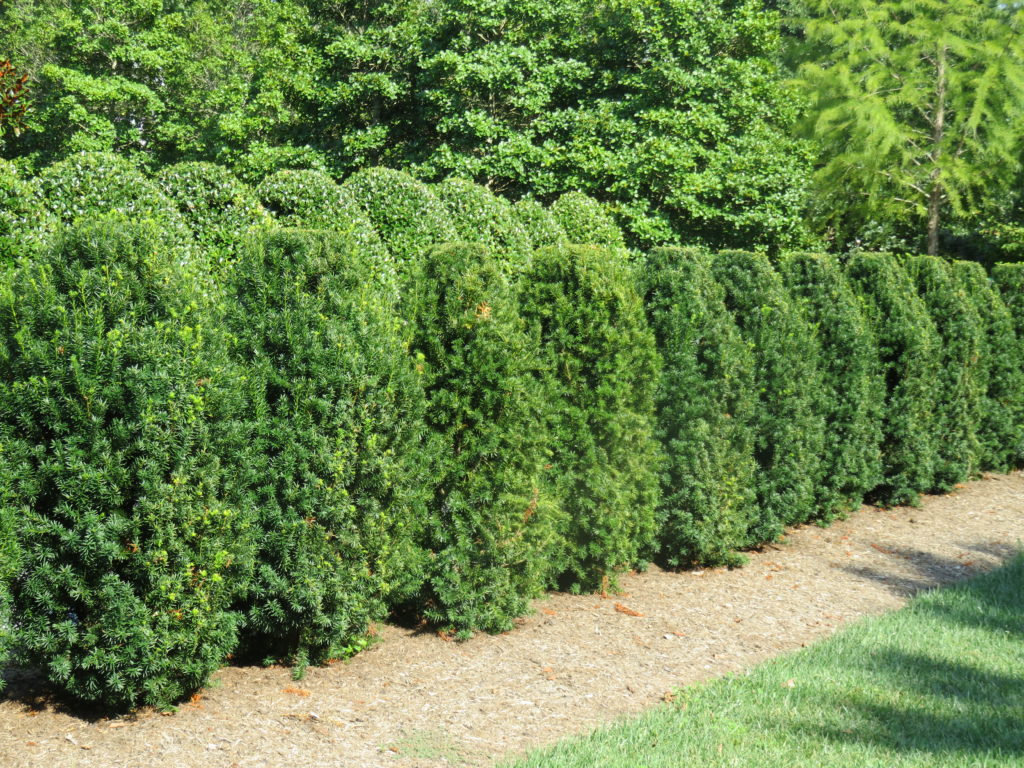
Why Plant A Hedge:
- Living privacy fence offers privacy from street traffic and neighbors
- Serves as a sound barrier to reduce noise
- A windbreak to reduce harsh winds
- Snow fence to reduce snow accumulation
- Wildlife protection and food for birds from berries and seed.
Planning: Select vigorous disease and pest free trees and shrubs that suit your region. Wise plant choices create a healthy hedge that’s easy to maintain. Select slow to moderate growing shrubs and trees as fast growing plants require more pruning (hedging).
Your choice of shrubs or seedling trees also should be guided by the style of hedge you want. Formal hedges with solid architectural form will neatly frame landscapes spaces – creating rooms. Deciduous flowering shrubs, such as lilac, spiraea, forsythia, and evergreens, such as boxwood, arborvitae, holly, are effective hedges although much of their flower power is lost. The height and depth of the hedge is determined by the vigor of the varieties of shrubs chosen.

Planting a Hedge
1. Stake and mark the planting area, whether in a straight or a curved one. Use a measuring tape as a guide. Be aware of the location of underground utilities.
2. Space plants apart, permitting the plants to reach their mature heights. avoid overcrowding or developing an “instant hedge”. Stagger plants in two rows for a thicker hedge that will fill in more quickly serve as a sound barrier.
3. Dig the planting holes and remove the shrubs from pots and set them at the same dept. Space according to what shrubs you are setting and refill in the planting holes.
4. Water shrubs as needed during the first growing season.
5. Mulch – Spread a 2 to 3 inch layer of shredded bark mulch around plants to conserve water. Do not pile up mulch around the plan stems (trunks).
Deciduous: European beech (Fagus sylvatica), Linden (Tilia spp.), European hornbeam (Carpinus betulus), Hedge Maple (Acer campestre), Arrowwood viburnum (Viburnum dentatum), Rose of Sharon (Hibiscus syriacus), Firethorn (Pyracantha coccinea), Forsythia (Forsythia spp.), Various spireas (Spiraea spp.), Flowering quince (Chaenomeles x), red chokeberry (Aronia arbutifolia ‘Brilliantissima’), Japanese barberry (Berberis thunbergii).
Evergreens: Emerald arborvitae (Thuja occidentalis ‘Smaragd’), Western arborvitae (Thuja plicata), Green Giant arborvitae (Thuja standishi x plicata), Canadian hemlock (Tsuga canadensis), Schip or Cherry Laurel (Prunus laurocerasus ‘Schipkaensis’), Glossy abelia (Abelia × grandiflora), Japanese holly (Ilex crenata), Inkberry holly (Ilex glabra), Boxwood (Buxus spp.), Hicks yew (Taxus x media), Junipers (Juniperus chinensis), Native Cedars (Juniperus virginiana), Japanese Euonymus (Euonymus japonicus).

 Posted in
Posted in 
